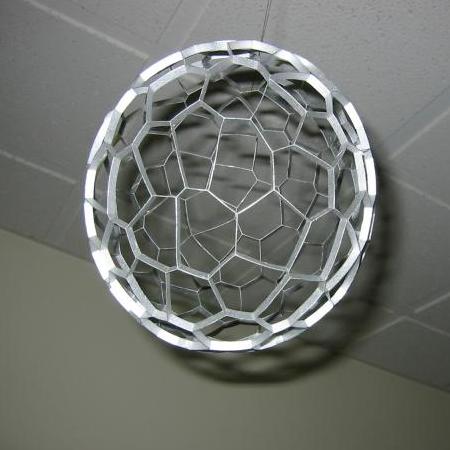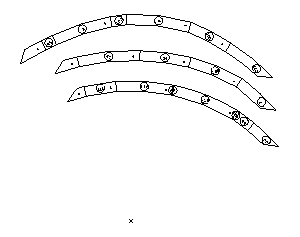

No matter how neat my construction, it's still detectable that there's three layers where each tab is. I came up with a method that tries to get around this, by simply breaking each ring along a diagonal line, across one of its sides. The ring next to it provides support, and the winding rule makes sure that no two such breaks land on top of each other.
From the couple of test peices I used this method on, it seems to
me that it's acceptable for voronoi models, but in a triangulation,
there's too much instability that's evident. Even so, I'm not totally
happy with it; it feels less sturdy than the other models.

This one is my biggest so far, 128 cells and a little less than 6" in diameter. The generating points were chosen at random, and then adjusted by 1000 iterations of code that simply moves the two nearest points in the triangulation further apart. It's slightly elipsoidal (multiplier of 1.1) which in hindsight is probably a mistake, since it's hard to see that it's not just a slightly wobbly sphere, and it's hard to find the axis to make it hang straight.
The PostScript ended up being seven pages.
I took it to my office, and hung it from the ceiling there, since it's too fragile to roll around my desk safely.